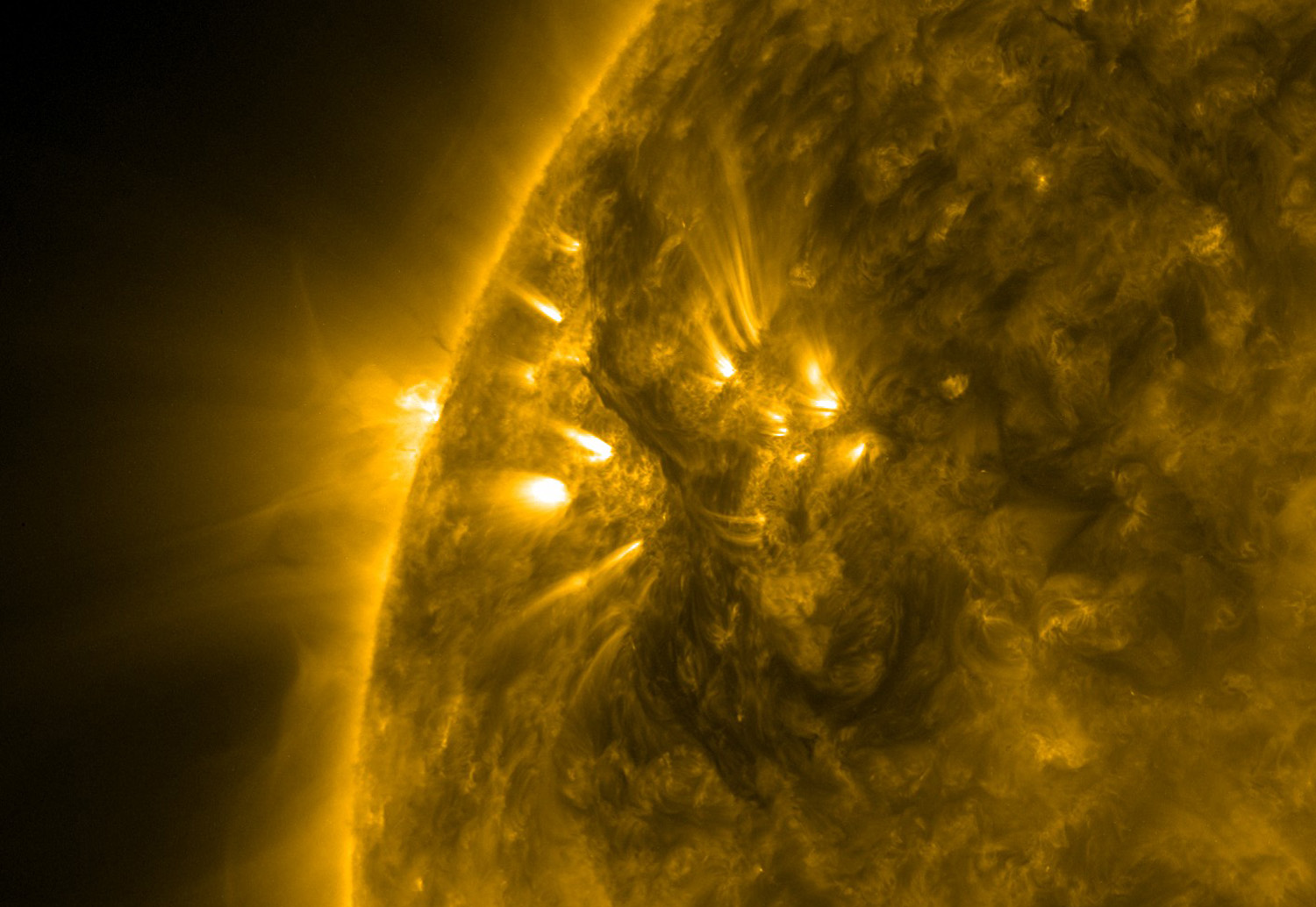 NASA's Solar Dynamics Observatory, or SDO, has allowed scientists for the first time to comprehensively view the dynamic nature of storms on the sun. Solar storms have been recognized as a cause of technological problems on Earth since the invention of the telegraph in the 19th century.
NASA's Solar Dynamics Observatory, or SDO, has allowed scientists for the first time to comprehensively view the dynamic nature of storms on the sun. Solar storms have been recognized as a cause of technological problems on Earth since the invention of the telegraph in the 19th century.The Atmospheric Imaging Assembly (AIA), one of three instruments aboard SDO, allowed scientists to discover that even minor solar events are never truly small scale. Shortly after AIA opened its doors on March 30, scientists observed a large eruptive prominence on the sun's edge, followed by a filament eruption a third of the way across the star's disk from the eruption.
"Even small events restructure large regions of the solar surface," said Alan Title, AIA principal investigator at Lockheed Martin Advanced Technology Center in Palo Alto, Calif. "It's been possible to recognize the size of these regions because of the combination of spatial, temporal and area coverage provided by AIA."
read more...



